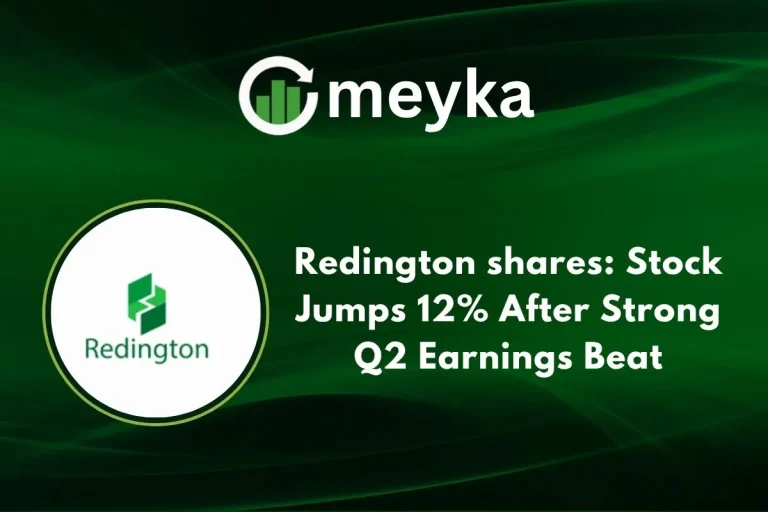Bandhan Bank Share: Q2 Results Show Strong Deal Wins and Record Pipeline
Bandhan Bank has become one of India’s fastest-growing private lenders. In its latest quarter, the bank posted signs of both promise and pressure. We see strong business growth, a rising customer base, and a pipeline that looks full of future deals. At the same time, profitability has taken a hit. The story is not simple, but it is telling: Bandhan is pivoting. It is moving from being a microfinance-heavy lender to a more diversified bank. The Q2 update gives us a real window into that transformation.
Quick Snapshot of Q2 Numbers
For the quarter ended September 30, 2025 (Q2 FY26), Bandhan Bank reported a net profit after tax of ₹112 crore, down 88 % year-on-year from ₹937 crore in the same period last year. Net Interest Income (NII) fell about 12 % to ~₹2,589 crore from ~₹2,934 crore. Total business (advances + deposits) grew around 9 % to ₹2.98 lakh crore. The gross non-performing asset (GNPA) ratio rose to ~5.02 %. The share of secured advances improved to ~55 % of total loans.
In short: business growth but margin & profit pressure.
Strong Deal Wins & Record Pipeline
While the headline profit number is weak, there are threads of strength. Bandhan’s total business grew 9 % in Q2, led by both advances and deposits. We see that the bank is building up a “pipeline”, meaning deals and loans yet to be booked, which suggests potential for future growth. This is important because it shows that Bandhan is not standing still. For example, the secured loan book (housing/MSME) rose, pushing up the secured share of advances to ~55 %.
We also note that deposits rose 10.9 % YoY, with retail deposits up ~16 %.
So even though margins are under pressure now, we believe the stronger pipeline and deal wins signal better days ahead.
Loan Book & Deposits Performance
Bandhan’s advances grew ~7.2 % year-on-year to ~₹1.40 lakh crore. Deposits rose ~10.9 % YoY, reaching about ~₹1.58 lakh crore. Retail deposit growth was stronger: ~16 % YoY. The CASA (current account + savings account) ratio stood at ~28 %, which is modest for a bank aiming for low-cost funds.
We believe this mix is critical: growing retail deposits improves stability, while advanced growth (especially in secured book), enhances earning potential.
Key Business Drivers
Several factors stand out as drivers for Bandhan going forward:
- Retail & secured portfolio growth: The shift from microfinance to housing,,, and secured loans is underway. For example, secured advances now ~55the % of the total.
- Deposit growth, especially retail: Retail deposits up ~16 % YoY. This helps fund lending at a lower cost.
- National distribution footprint: Bandhan operates in 35 of 36 states/UTs with over 6,350 outlets.
- Digital banking & process improvement: The bank has flagged technology, process refinements, and people capability as strategic priorities.
- Diversification of risk: Moving away from heavy microfinance exposure toward more secure, diversified loans improves resilience.
We believe that if Bandhan executes well on these drivers, it can build a stronger, more stable earnings base over the next few years.
Management Commentary
The bank’s MD & CEO, Partha Pratim Sengupta, described Q2 as a “transitional” quarter. He noted the bank’s focus on CASA growth and secured advances, while acknowledging that microfinance growth remained subdued. Management also stressed prudent risk management, strengthened provisioning, and a goal to reduce microfinance share to ~30-32 % of advances over 2-3 years.
We interpret this as a signal: the bank is willingly accepting short-term pain to build a stronger future. That may test investor patience, but it could pay off if execution is solid.
Bandhan Bank Share Price Trend
The market responded to the Q2 results with caution: Bandhan Bank shares fell ~5-6 % after the earnings release. Technically, the stock had shown signs of a breakout with improving momentum ahead of Q2. Analysts had flagged reversal potential. However, given the large drop in profit and margin pressure, investors are likely waiting for clearer signs of recovery before getting bullish.
From our view, the share is trading on the story of turnaround rather than immediate performance. If Bandhan can deliver on growth, deposits, and secured lending while controlling credit costs, it could reward investors in the medium term.
Risks to Watch
We must be clear: there are several risks.
- The MFI (micro-finance institution) exposure still exists, and a slip in that segment could hurt.
- Margin pressure is real: NII fell ~12 % YoY.
- With interest rates high or volatile, the cost of funds may rise and margins compress further.
- Execution risks: Moving from microfinance to diversified secured lending is easier said than done.
- Macroeconomic slowdown or than sharper-than-expected NPA beyond expectations could disrupt plans.
We believe investors need to monitor these risk factors closely, even while tracking the growth story.
Conclusion
In Q2, Bandhan Bank presented a mix of challenge and promise. While profit has plunged and margins are squeezed, the bank has shown growth in total business, a rising retail deposit bbaseand a stronger shift toward secured lending. We believe the deal wins and the pipeline hints at the bank building a more stable platform for future growth. But this is still a transition period. For investors, the takeaway is simple: Bandhan is evolving. If it executes well, the payout could be meaningful. If it falters, risk remains. We will be watching the next few quarters for signs of real turnaround, not just potential.
FAQS
Profit fell ~88% because Net Interest Income dropped, credit costs rose sharply and margins compressed.
Key drivers include growth of retail & secured loans, expansion of retail dedepositsand diversification of the loan book away from microfinance.
Risks include margin pressure, microfinance exposure, potential NPA increase, macro-economic headwinds, and execution of transition strategies.
Disclaimer:
The content shared by Meyka AI PTY LTD is solely for research and informational purposes. Meyka is not a financial advisory service, and the information provided should not be considered investment or trading advice.






